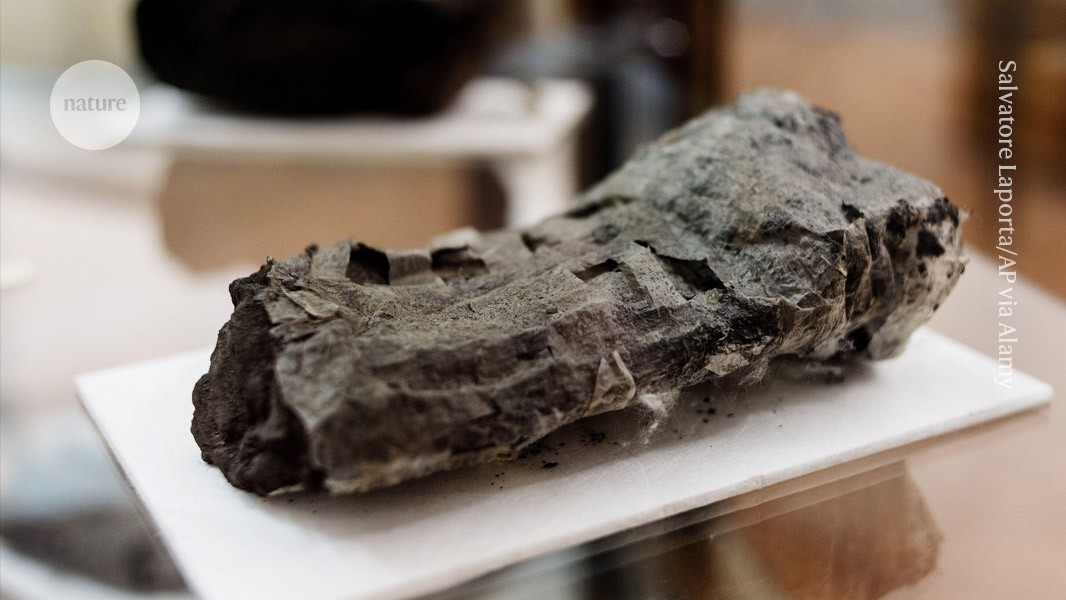
"It's like a dream to have reached this point, says Brent Seales, a computer scientist at the University of Kentucky in Lexington, who has been working to read the scrolls for 20 years. It seems so impossible and yet we're doing it."
"At least five of the scrolls show what look like clear signs of visible ink, researchers tell Nature. That's very promising, says Stephen Parsons, a computer scientist at the University of Kentucky who is also involved with efforts to read the scrolls."
"More than 1,800 carbonized papyri were discovered in the eighteenth century among the remains of a luxurious Roman villa at Herculaneum, near Naples."
"The scrolls offer an unprecedented cache of ancient knowledge, potentially containing completely unknown texts direct from the pens of their Greek and Roman authors."
On March 27, 18 ancient scrolls from Naples' Vittorio Emanuele III National Library arrived at London Luton Airport for analysis using the Diamond Light Source particle accelerator. This initiative aims to decipher the burnt Herculaneum scrolls, buried during the Mount Vesuvius eruption in AD 79. Following a successful deciphering through AI last year, researchers are optimistic, with early scans indicating visible ink on several scrolls. Over 1,800 carbonized papyri found in Herculaneum present a significant opportunity to uncover new ancient texts from Greek and Roman authors.
Read at Nature
Unable to calculate read time
Collection
[
|
...
]